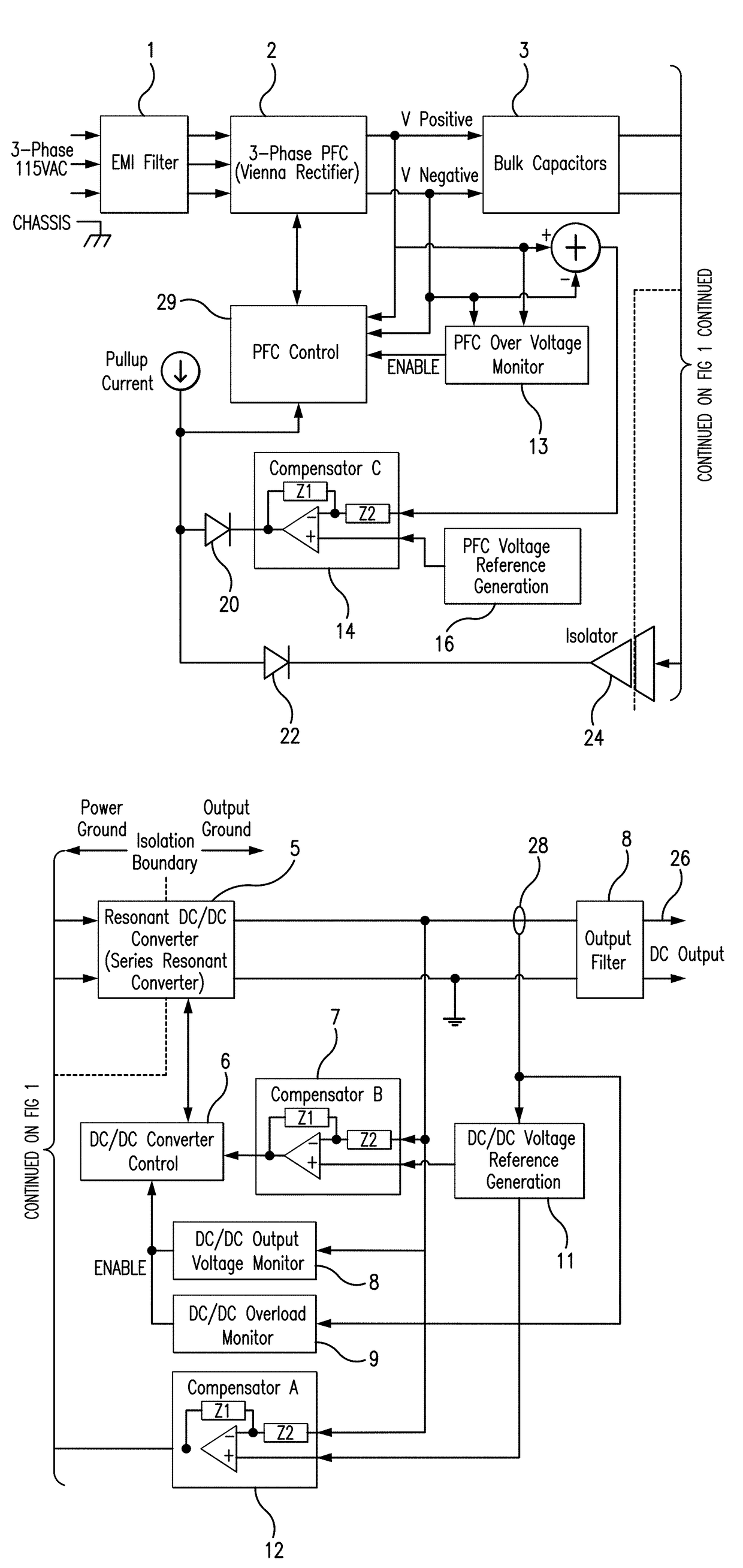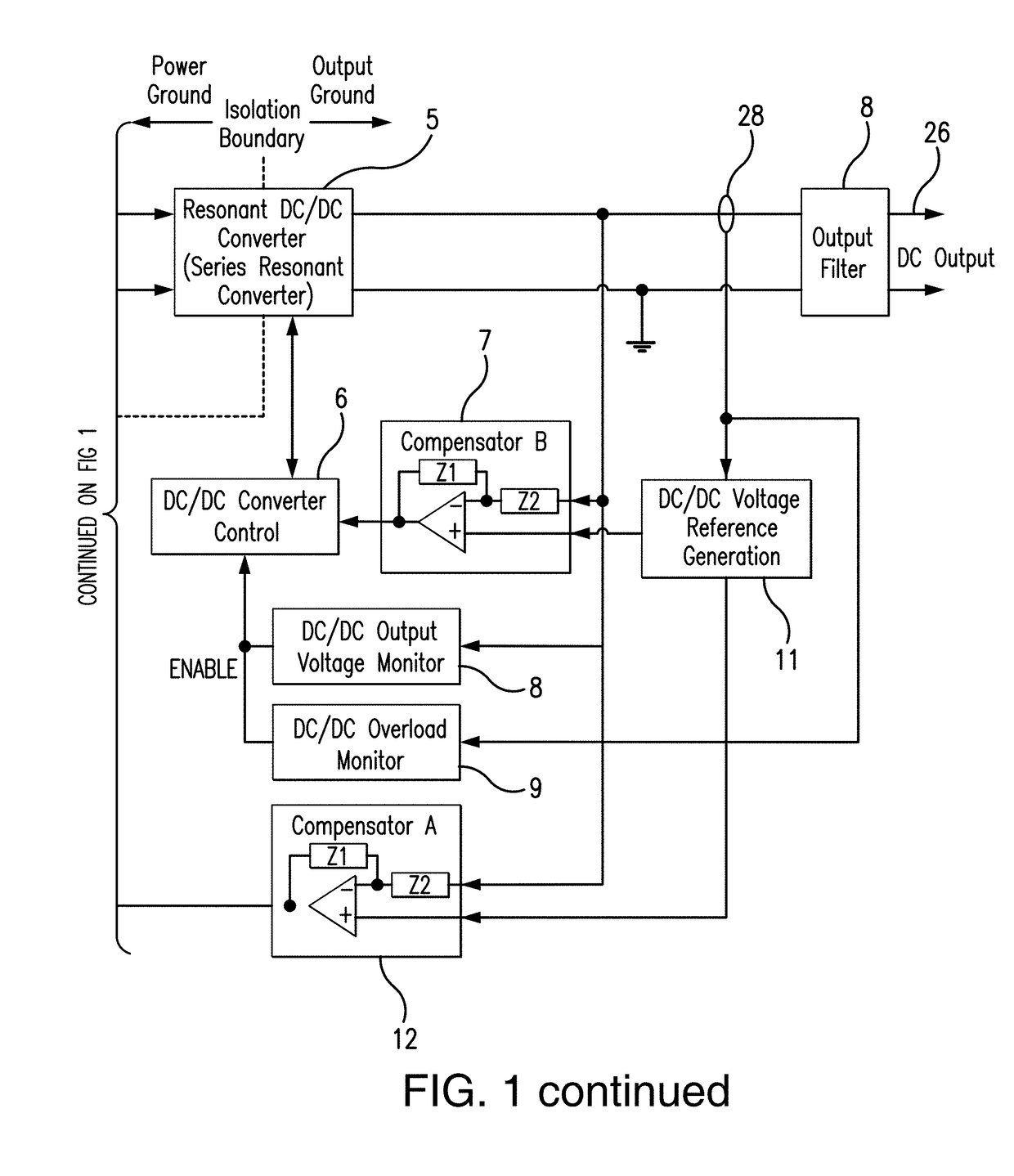Regulating transformer rectifier unit for DC power applications
a transformer rectifier and transformer technology, applied in the direction of electric variable regulation, process and machine control, instruments, etc., can solve the problems of ineffective rejection of transient voltage, lack of good regulation of traditional tru units, and multiple drawbacks of traditional tru and r-tru units
- Summary
- Abstract
- Description
- Claims
- Application Information
AI Technical Summary
Benefits of technology
Problems solved by technology
Method used
Image
Examples
Embodiment Construction
[0020]An exemplary embodiment is described herein with reference to the system block diagram depicted in FIG. 1. As used herein and in the claim language, terms such as “coupled to” or “connected to” shall be broadly interpreted to mean elements that are coupled or connected to other elements either directly or through intervening elements. The more restrictive term “couple directly to” or “connected directly to” will be used to describe couplings or connections that exclude intervening elements.
[0021]Referring to FIG. 1, unregulated three-phase AC power from, for example, an aircraft's generators, is first connected to an EMI (electromagnetic interference) filter 1. As mentioned above, the frequency of the input voltage may vary over a wide range (e.g., 300-800 Hz). EMI filter 1 attenuates RF voltage / currents at the three-phase power input and prevents them from propagating both downstream as well as upstream.
[0022]In the exemplary embodiment of FIG. 1, the EMI-filtered voltage at ...
PUM
 Login to View More
Login to View More Abstract
Description
Claims
Application Information
 Login to View More
Login to View More - R&D
- Intellectual Property
- Life Sciences
- Materials
- Tech Scout
- Unparalleled Data Quality
- Higher Quality Content
- 60% Fewer Hallucinations
Browse by: Latest US Patents, China's latest patents, Technical Efficacy Thesaurus, Application Domain, Technology Topic, Popular Technical Reports.
© 2025 PatSnap. All rights reserved.Legal|Privacy policy|Modern Slavery Act Transparency Statement|Sitemap|About US| Contact US: help@patsnap.com



